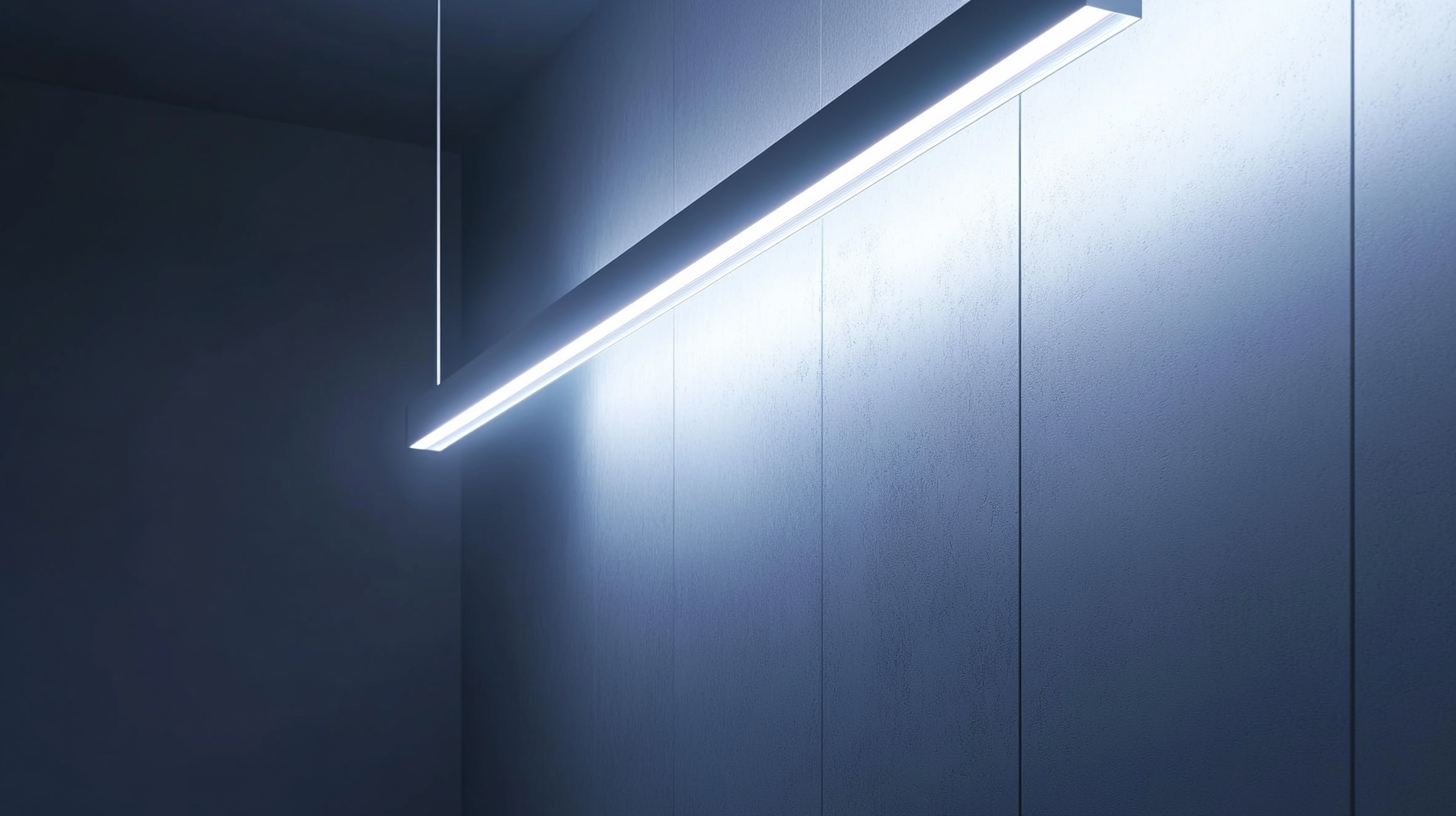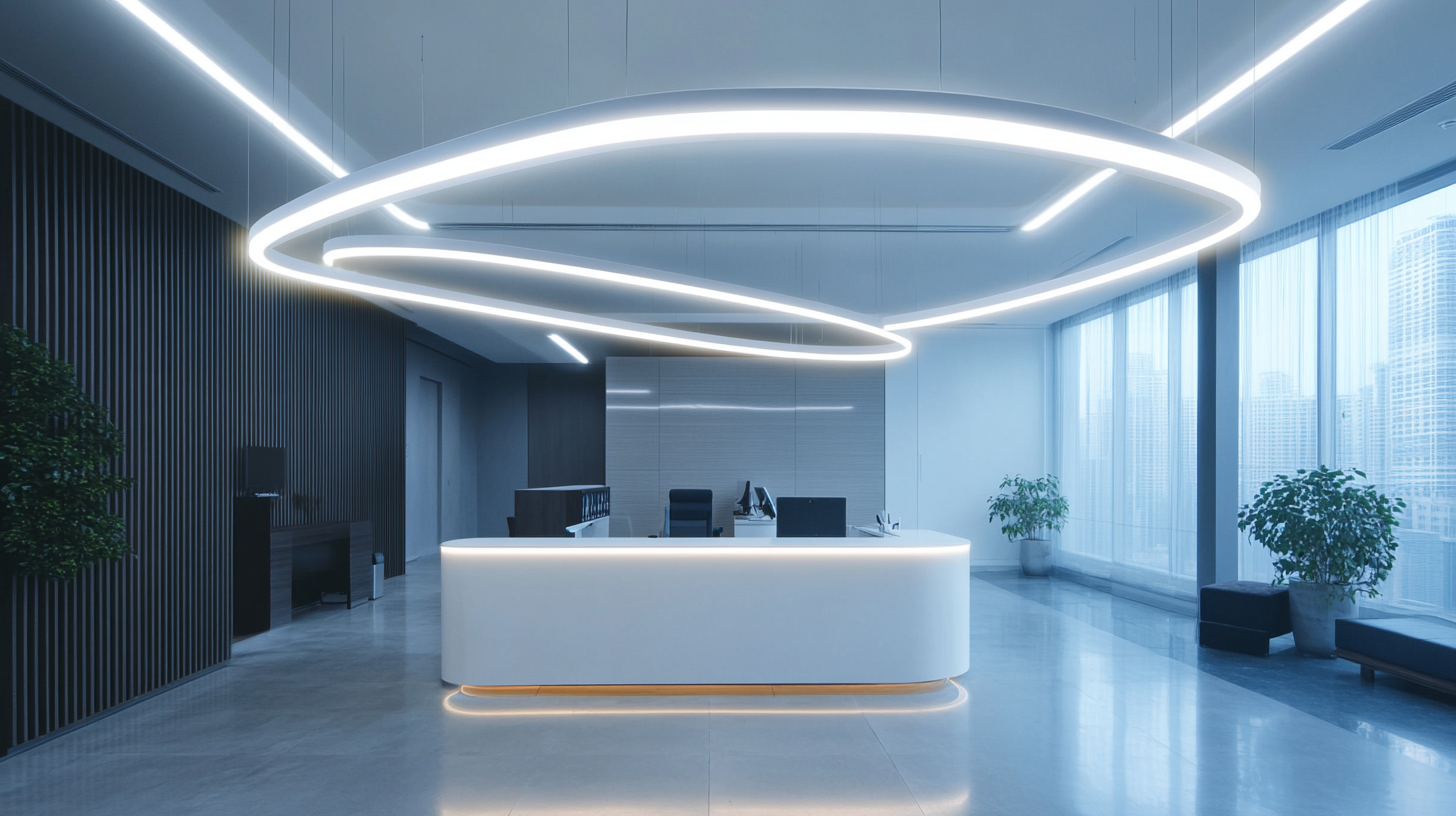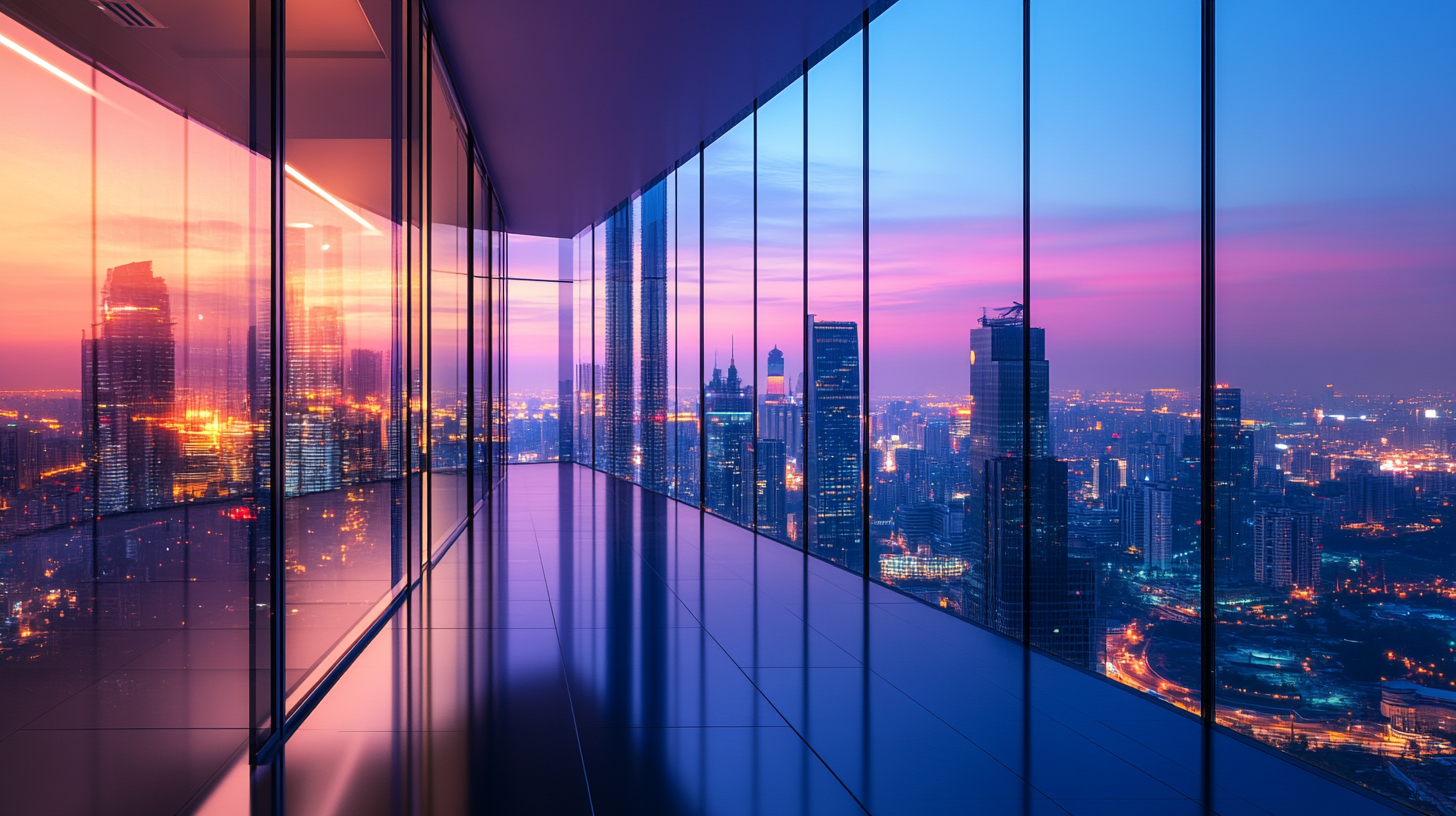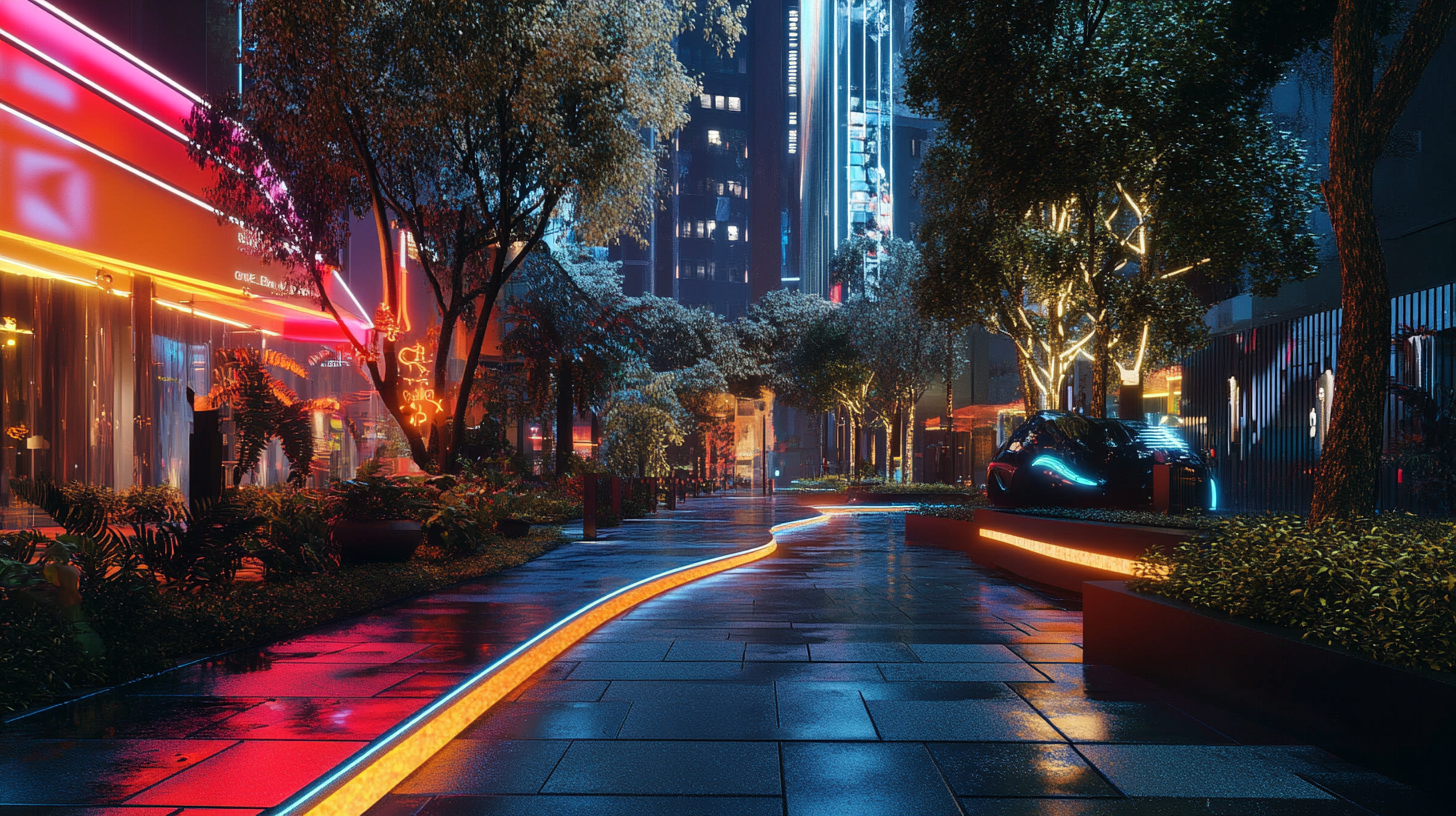Envisioning Tomorrow: The Evolution of Linear Lighting Solutions
In recent years, the realm of architectural and interior design has witnessed a significant transformation, particularly in the realm of Linear Lighting. As technology advances and design philosophies evolve, the demand for versatile, efficient, and aesthetically pleasing lighting solutions has surged. Linear lighting, with its sleek lines and adaptability, has emerged as a favored choice among designers and consumers alike, redefining spaces and enhancing the ambiance in both residential and commercial environments. This blog delves into the journey of linear lighting, exploring its innovations and the trends that have shaped its development over time.
As we envision the future, it is essential to recognize how linear lighting solutions have not only catered to practical needs but have also inspired creativity in design. The integration of cutting-edge technologies, including smart controls and energy-efficient options, has allowed linear lighting to remain at the forefront of modern illumination. By examining the evolution of these solutions, we uncover the myriad ways in which linear lighting continues to influence architectural aesthetics while addressing environmental concerns. Join us as we explore the past, present, and future of linear lighting, and discover how it is poised to light up our tomorrows.

The Historical Journey of Linear Lighting: From Concept to Reality
The journey of linear lighting solutions showcases a rich historical evolution, reflecting the changing needs and technological advancements over the years. Initially, linear lighting emerged as a simple yet effective method to illuminate spaces, primarily utilizing incandescent bulbs housed in long fixtures. This early iteration emphasized functionality, as spaces sought adequate lighting to enhance visibility and safety. As technology progressed, so did linear lighting. The advent of fluorescent lighting in the mid-20th century revolutionized this concept, offering increased efficiency and a broader range of applications. Architects and designers began to see linear lighting not just as a necessity but as an aesthetic component capable of transforming environments. This shift allowed for more creative designs, paving the way for the integration of linear fixtures into architectural concepts and modern interior designs. In recent decades, the rise of LED technology has further propelled the evolution of linear lighting. LEDs provide unparalleled energy efficiency and longevity, allowing for innovative designs that were previously unattainable. Today, linear lighting is not only about illumination; it has become a versatile design element that enhances architectural features, influences mood, and contributes to sustainable practices. The historical journey from basic illumination to a sophisticated lighting solution illustrates how linear lighting has continuously adapted to meet the demands of modern society.

Key Innovations Shaping Modern Linear Lighting Technology
The evolution of linear lighting solutions has been marked by a series of key innovations that are reshaping the way we think about and utilize light in our environments. One of the most significant advancements in modern linear lighting technology is the integration of smart controls. With the rise of the Internet of Things (IoT), linear lighting systems are now capable of being controlled remotely, allowing users to adjust brightness, color temperature, and even programming schedules via mobile apps or voice commands. This level of control enhances energy efficiency and contributes to user comfort, transforming spaces into dynamic and responsive environments.
Another important innovation is the development of energy-efficient LED technology, which has become the backbone of contemporary linear lighting solutions. Compared to traditional lighting sources, LEDs consume significantly less power while providing equal or superior illumination. This shift not only leads to lower energy bills but also aligns with global sustainability goals. Furthermore, advancements in LED design have introduced flexible and slim profiles, enabling creative installation options that can adapt to diverse architectural styles and interior designs.
Lastly, the emergence of tunable white and RGB color-changing linear fixtures allows for enhanced mood lighting and personalization. By adjusting the color and intensity of light, users can create various atmospheres that can influence productivity, relaxation, and overall well-being. This capability is increasingly being harnessed in commercial settings, such as offices and retail spaces, where ambiance plays a crucial role in customer experience and employee satisfaction. The ongoing innovation within linear lighting technology not only elevates aesthetic appeal but also enhances functionality in everyday spaces.

Sustainable Practices in the Development of Linear Lighting Solutions
The evolution of linear lighting solutions reflects a remarkable shift towards sustainability, embodying the principles that govern modern design practices. Sustainable practices are crucial in the development of these lighting systems, which prioritize not only energy efficiency but also the responsible sourcing of materials. As industries increasingly face the pressing need for eco-friendly innovations, the lighting sector is responding by integrating sustainable methods from conception to execution.
By sourcing materials locally, manufacturers are not only reducing their carbon footprints but also contributing to the economic resilience of communities. This approach mirrors the broader trends in various sectors that emphasize the importance of sustainable practices, such as the adoption of circular economy principles. These principles advocate for a cycle of use that minimizes waste, thereby enhancing the sustainability of products like linear lighting solutions.
Moreover, as African cities grow, the potential for integrating sustainable building practices becomes increasingly salient. Utilizing adaptable lighting solutions can significantly enhance urban environments, providing not just illumination but also contributing to the aesthetic and functional ambitions of modern architecture. The synergy between design and sustainability, particularly in linear lighting, positions it at the forefront of contemporary infrastructure development, where the future not only envisions beauty and functionality but also a commitment to the planet's well-being.

Design Trends and Aesthetic Considerations for Linear Lighting
The evolution of linear lighting solutions has brought about significant design trends that cater to both functionality and aesthetics. With the global market for linear lighting projected to reach USD 9.3 billion by 2025, an annual growth rate of approximately 8.2%, the demand for innovative designs continues to rise. This increase is influenced by the advent of advanced LEDs, which provide more flexibility in terms of design and installation. Designers are increasingly embracing modular systems that allow for customization, enabling unique installations that adapt to various interior styles.
Aesthetic considerations for linear lighting are also evolving, with a noticeable shift towards minimalistic and sleek designs. According to a report by the American Institute of Architects, 62% of architects believe that contemporary home designs favor integrated linear lighting solutions that blend seamlessly into architectural features. The emphasis on clean lines and understated elegance has prompted manufacturers to prioritize materials that enhance the visual appeal, such as slim profiles and varied finishes that can complement both commercial and residential spaces.
Incorporating smart technology into linear lighting is another trend shaping the industry. Research by the Lighting Research Center indicates that smart lighting systems can reduce energy consumption by up to 60%, driving demand for solutions that are not only aesthetically pleasing but also environmentally sustainable. As designers continue to explore the interplay between form and function, we can anticipate further innovations that redefine how linear lighting enhances our environments while meeting the practical needs of users.
Future Possibilities: The Role of Smart Technology in Linear Lighting
As CES 2024 unfolds, the spotlight shines on the intersection of smart technology and linear lighting solutions—a realm poised for remarkable evolution. With advancements showcasing the potentials of smart technology, the concept of linear lighting moves beyond mere functionality, emerging as an integral component of smart environments. This integration ensures that lighting can adapt not only to the aesthetic desires of users but also to their practical needs, enhancing overall experiences.
The trend of smart linear lighting is particularly evident in automotive applications, where ambient lighting has evolved from simple illumination to a multifaceted experience that embraces color dynamics and interactivity. The incorporation of smart technologies allows vehicles to respond to various stimuli, creating environments that resonate with music rhythms or pulse with vibrant colors, thereby enhancing the driving experience. This transformation signifies a broader movement toward personalization and adaptability, aligning with the contemporary demand for smart living solutions.
As we venture further into the future, the role of linear lighting solutions will be characterized by a synergy of technology and design. The collaborative efforts at international exhibitions highlight the commitment to fostering innovation in lighting. The advancements showcased at events like CES and other upcoming expos underscore a shared vision: lighting solutions that communicate, adapt, and enhance our daily environments. The journey of linear lighting is just beginning, and the possibilities are limitless as we embrace the future of smart technology.

